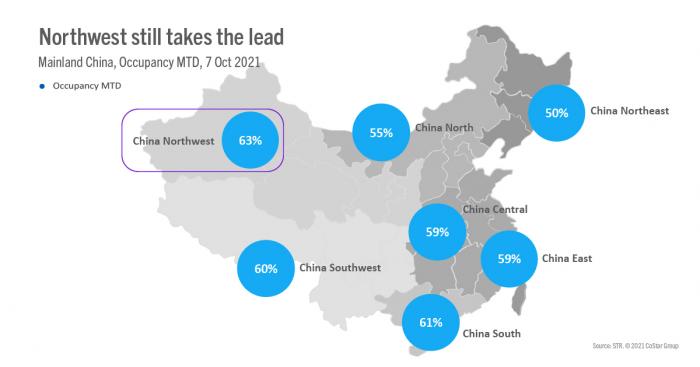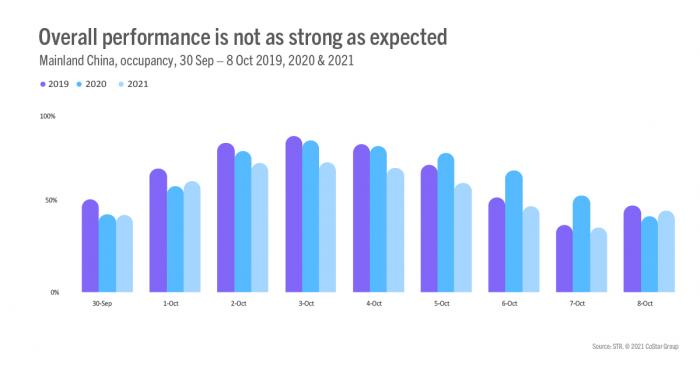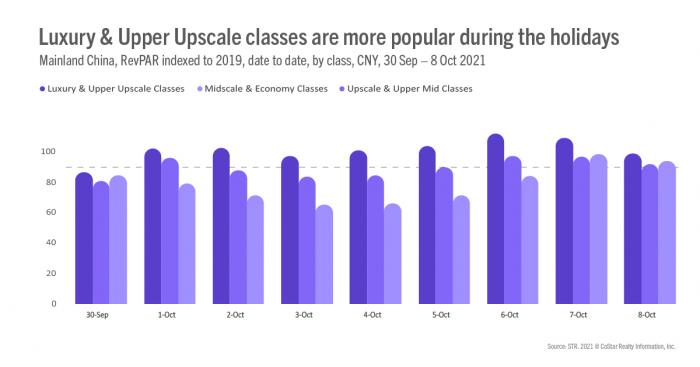Did the Mid-Autumn Festival and the National Day stimulate more recovery for Mainland China’s hotel market? Or did sporadic local cases of COVID- 19 affect the overall performance of hotels? Are there evident performance differences among hotels from different class segments across the country? In comparison to pre-COVID periods, where is the Chinese hotel industry in overall recovery? As the world's largest provider of data & analytics services for the global hospitality industry, STR integrates nationwide hotel data from the Chinese Golden Week holidays to bring you the latest industry overview.
Notable Northwest Market
From a regional perspective, with the continued growing popularity of tourist destinations such as Xinjiang and Qinghai, Northwest China became the market with the highest hotel occupancy at a remarkable 63.0% during the Golden Week holidays. Central China, East China, Southwest China and South China were almost on par in market performances, with occupancy rates fluctuating slightly around 60.0%. North China demonstrated a mediocre performance with occupancy at 55.0%. The performance of the Northeast region was lagging at 50.0%. Compared with the first three quarters, performance of the Mainland China’s market did not show much improvement during the Golden Week holidays.


